Activity Stream
Posts Activity Stream
-
-
Thanks guys!
Thanks for all the info Doug!
I will try it all on the flat pieces that can be replaced. The turttledeck is shaped, bent 90 degrees on the edges, so maybe I will figure out the best way before I get to it.
Thanks,
Ron
-
I was thinking about the cost of the .108 or .118 Lexan we got for the Cub at about $90 locally.
EDMO
-
I had mine finished and painted - waited to move before doing paperwork and flights - dropped it off of the trailer in the Yukon - stripped it down, repaired and modified, and still trying to get it finished.
If I had never flown before, I would have given up by now. Too stubborn to quit!
EDMO
-
Well even the best pilot has a bad day sometimes... How does that saying go about those who have ground looped and those that will (every taildragger pilot) None of us is perfect, and one day it's liable to be our turn... I've had several turns already! LOL Jim Chuk
-
Last sheet of lexan I got was from Seeley Plastics. They have a office/warehouse in Duluth Mn. It was .060 x 4' x 8' and it was $50. I picked it up so there was no shipping charge. Check the plastic suppliers online before you pay Aircraft Spruce's price. Spruce wants twice what I paid, and shipping would probably have been $30 or more. Jim Chuk
-
For the record, Dave's reaction is "Not my problem. I ain't gonna fix the damn thing."
So I am sick for him.
-
It just makes me sick. I watched Dave build this plane. He lost a ton of money from what he had in it, not to mention the thousands of hours of his time.
He sold the plane to a wonderfully talented pilot, a young man who lives in Hawaii, but the plane was to be kept in Oregon at the hangar complex of the owner of Oregon Aero, a friend of his, also an accomplished pilot. I just wonder who was at the controls to do such a stupid stunt.
-
I hear you Larry,
My buddy's Luscombe was champion at Osh - now with repaired LG, mixed paint, etc, it is nowhere near what it used to be - but will fly again - all it takes is $$$ and time, but he is a perfectionist - I tell him that I wont build a show plane - every nice collector vehicle I have owned, someone crashed into it and ruined it!
EDMO
-
Ed, look at the photos at the start of this thread. This WAS an Airventure 2011 Award Winning, better than new restoration, that is now for all intents destroyed.
Yes a bent spar and folded gear. That also means the fuselage is twisted, the engine (was zero time) is junk until full tear down, prop is junk, all of the near perfect fabric work will need to be torn off, new interior gutted, and on and on.
It is just sickeningly sad. Stupidity killed Scruffy (the Nickname Dave gave her from her humble beginnings).
-
a 4x8 Lexan is between $80 and $100 - probably more aggravation than that in trying to clean old stuff, and you can still end up with scraps.
EDMO
-
NTSB only said that LG and one spar were damaged - I thought a plane still lived as long as the Data Plate was still there?
EDMO
-
-
Where is the engine and prop? I'm sure its in the 420 lbs.
Is that a set of seat covers in photo? I was going to sell you some.
Looks like you have reinforced the longerons for that cool Big LG.
EDMO
-
I had it pegged as a PT-19 from the photos, but basically the same design...
Last I saw they were listing his condition "critical".
-
-
-
-
This was not in his Beaver - But a WW2 open tandem cockpit trainer I cant identify - PT something?
Looks in a lot better shape than one Pursang that we know about!
Any progress on the rebuild this winter, Lostman?
EDMO
-
Lost engine after take off, attempted to return and almost made it. Hell of an effort to find what looked like the tiniest piece of open real estate in a v-e-r-y densely populated area. Bravo to lostman and Harrison, tearing up the course!
1 person likes this -
Report from son saying Harrison is OK, but battered - Landed on Golf course about 10 seconds from home airport in CAL. Looks like LG wiped out, radial engine mount broke, wings level - fuselage not bad either.
EDMO
-
I tried heat, Goo Gone and mineral spirits. None made it easy. In the end, my stubborn determination got it off, but I probably would have been better served buying a new piece.
1 person likes this -
I got to wondering where i was at so I stuck everything I could think of in my plane and weighed it, Im 420.6 lbs with out glass, paint, fabric, and wood streamlining material. I think I will be more in the 520lbs range, when finished that sounds normal.
-
I wonder if anyone has tried soaking it in just plain water - like in a bathtub - I think I have some that is older than 25 years....maybe 35? Or with some liquid detergent?
EDMO
-
Ok, that is one crazy story. I went searching for more pics and found the 'rest of the story'.
from MilNet:
The enemy fighters attacked at 1350 on a clear almost cloudless day. The All American was in tight formation with the other bombers, flying at 28,000 feet. The enemy aircraft made their passes at the 17’s while antiaircraft fire belched skyward.
The bombers located the target (the wharf area of Bizerta) and the bombardiers dropped the bombs. With the bomb bays empty, the aircraft started home.
Kendrick R. Bragg, Jr. was the pilot of the All American and recalls what happened after leaving Bizerta. “As we left the target and headed home, the fast enemy ME-109’s once more rose to pounce on us. Suddenly I noticed two of them far to the north sneaking along in the same direction that we were going.
They were out of range and harmless for the moment, but I told our gunners to keep an eye on them. “We were flying Number 2 position off the right wind of the lead plane piloted by Captain Coulter. He, too, had seen the two fighter planes and I saw his top turret swing around toward the nose to protect the plane’s most vulnerable quarter.
“I scanned the skies, then looked again at the two enemy craft. They had suddenly turned and were racing toward us. The two small specks increased rapidly in size as they came nearer. Evidently they were planning a frontal attack, determined to shoot it out nose to nose. This was the most difficult kind of attack but was the surest way of sending a Fortress down.
“On they came, one plane about thirty seconds behind the other. They were ready for a one-two punch with their terrific firing power. We were flying in tight formation now with Captain Coulter. He began a slight dive to avoid the oncoming fighter, and I followed. They patterned us, managing to stay about level with us. In a split second they were in shooting range and our forward gunners opened fire. Brilliant tracer bullets flew in both directions, as though a score of boys were fighting it out with Roman candles.
“The first attacker half-rolled into inverted flight to make a quick get-away. As he did I saw Captain Coulter’s bomber burst into smoke and start earthward in an uncontrolled spiral. The second enemy fighter was now our primary concern. As she followed her leader into a roll our gunners found the mark. Fifty-caliber bullets ripped into the pilot’s ****pit. The Nazi pilot was disposed of, but the plane streaked on toward us. I rammed the stick forward in a violent attempt to avoid collision. The rate of closure of the two planes was close to 600 miles-an-jour and my action seemed sluggish. I flinched as the fighter passed inches over my head and then I felt a slight thud like a coughing engine.
“I checked the engines and the controls. The trim tabs were not working. I tried to level the All American but she insisted on climbing. It was only with the pressure from knees and hands that I was able to hold her in anything like a straight line. The copilot tired his controls. He got the same reaction. But we found by throttling back the engines we could keep her on a fairly even keel. I tired to call the pilot of the lead plane which had gone down only a moment before. There was no answer.
“Pilot from top-turret†came an excited voice over the intercom. I was busy with the controls. “Come in top-turret. What’s the matter with youâ€? I asked. “Sir we’ve received some damage in the tail section. I think you should have a look.â€
“We were at 12,000 feet now and no longer needed our oxygen masks. I turned the controls over to the copilot and went toward the rear of the plane. As I opened the door of the radio compartment and looked back into the fuselage I was stunned. A torn mass of shredded metal greeted my eyes. Wires were dangling and sheets of metal were flapping as the air rushed in through the torn wreckage. Three-fourths of the plane had been cut completely through by the enemy fighter and a large piece of the ME-109’s wing was lodged in the tail of our plane.
“The opening made by the German fighter was larger than the exit door. It left our tail section hanging on by a few slender spars an a narrow strip of metallic skin. Lieutenant Bragg climbed into the upper turret to assess the damage from the outside and discovered that the tail section was swinging as much as a foot and a half out of line with the front of the plane. To make matters worse, the left horizontal stabilizer was missing, explaining why the airplane was so difficult to handle.
Bragg decided to try and make it back to Biskra. He returned to the seat, ordered everyone to an emergency exit, then began the long journey home. He recalls their arrival: “As we neared the field we fired three emergency flares, then circled at 2,000 feet while the other planes cleared the runways. We could see the alert crews, ambulances, and crash trucks making ready for us.
“Without radio contact with the field we had to wait for the signal that all was clear and ready for us. When we got the signal I lowered the landing gear and flaps to test the reaction of the All American. They seemed to go reasonably well, considering. We had two alternatives. We could attempt a landing or we could bail out over the field and let the plane fly alone until she crashed – always a dangerous thing to do. I had made up my mind to set her down. She had brought us safely through so far; I knew she would complete the mission. The crew decided to ride her down too.
“A green flare from the field signaled that all was clear for our attempt at landing. I made a long, careful approach to the strip with the partial power until the front wheels touched the leveled earth. As I cut the throttles, I eased the stick forward to hold the tail section high until it eased down of its own weight as we lost speed.
“The tail touched the earth and I could feel the grating as she dragged without tail wheel along the desert sands. She came to a stop and I ordered the copilot to cut the engines. We were home!
The bombardier 1st Lt. Ralph Burbridge, last known living crew member, said once landed they opened a fuselage trap door causing the plane to fall completely in two. Ralph flew throughout the war, including 8th Air Force's first Berlin raid. See his recounting of the mission HERE.
NOTE: A Boeing engineer who inspected it stated that the airplane would not fly in such condition. Later the 124406 was rebuilt and returned to action by the 50th Service Squadron. Three survived from Captain Coulter’s bomber; Alfred D. Blair, bombardier; Ralph Birk, navigator and Sergeant Knight, tail-gunner entered a prison camp until the war was over.
1 person likes this
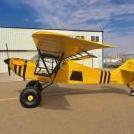
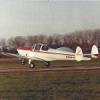
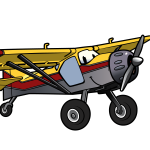

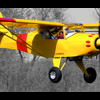
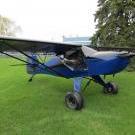

Lexan/plexi protective sticky paper removal
in Avid Flyer General Hangar
High Country
Posted
I also had the original 20+ yr old piece of lexan and tried everything I could come up with because I was to stubborn to just buy a new sheet. In the end it was not worth it and I wound up with several scratches on my windshield and I'm already planning to change it. Should have just got a new sheet FWIW just my .02
good luck